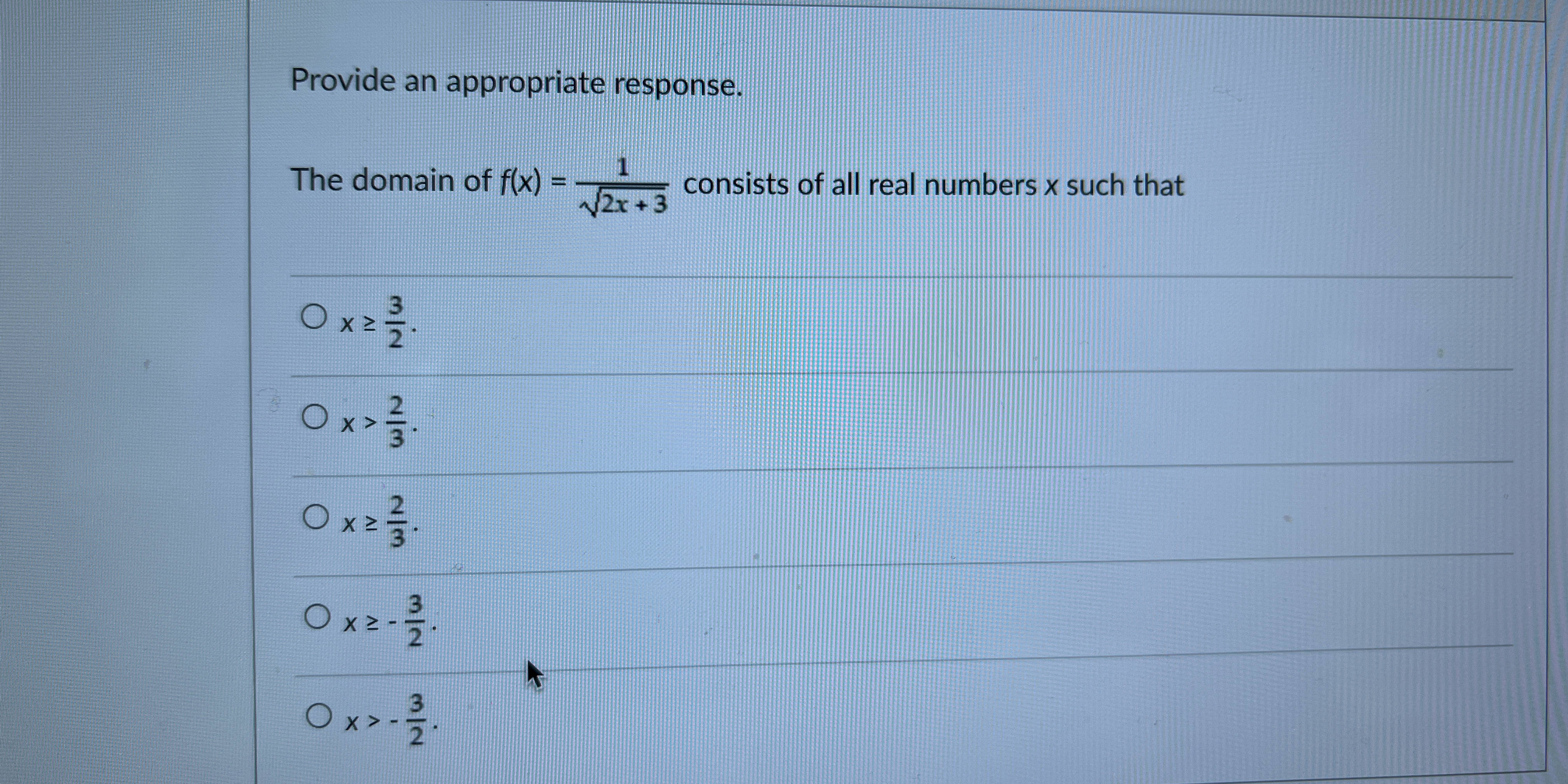The domain of f(x) = 1 / sqrt(2x + 3) consists of all real numbers x such that

Understand the Problem
The question is asking for the domain of the function f(x) = rac{1}{ ext{sqrt}(2x + 3)}. To find the domain, we need to determine the values of x for which the function is defined, particularly where the expression under the square root is positive, as the square root of a negative number is not defined in the set of real numbers.
Answer
The domain of \( f(x) \) is \( x > -\frac{3}{2} \).
Answer for screen readers
The domain of ( f(x) = \frac{1}{\sqrt{2x + 3}} ) consists of all real numbers ( x ) such that ( x > -\frac{3}{2} ).
Steps to Solve
-
Set the condition for the square root We need the expression inside the square root, $2x + 3$, to be greater than 0 for the function to be defined. So we write the inequality: $$ 2x + 3 > 0 $$
-
Solve the inequality Isolate $x$ by first subtracting 3 from both sides: $$ 2x > -3 $$ Now divide both sides by 2: $$ x > -\frac{3}{2} $$
-
Identify the domain The solution $x > -\frac{3}{2}$ tells us that the function is defined for all real numbers greater than $-\frac{3}{2}$. Therefore, the domain consists of all real numbers $x$ such that: $$ x > -\frac{3}{2} $$
The domain of ( f(x) = \frac{1}{\sqrt{2x + 3}} ) consists of all real numbers ( x ) such that ( x > -\frac{3}{2} ).
More Information
The function is defined for all values greater than ( -\frac{3}{2} ) because this ensures the argument of the square root is positive. If ( x ) were less than or equal to ( -\frac{3}{2} ), the function would involve taking the square root of a negative number, which is not defined in the real number system.
Tips
- Forgetting to reverse the inequality when multiplying or dividing by a negative number.
- Misinterpreting the inequality, leading to incorrect lower bounds on the domain.
AI-generated content may contain errors. Please verify critical information